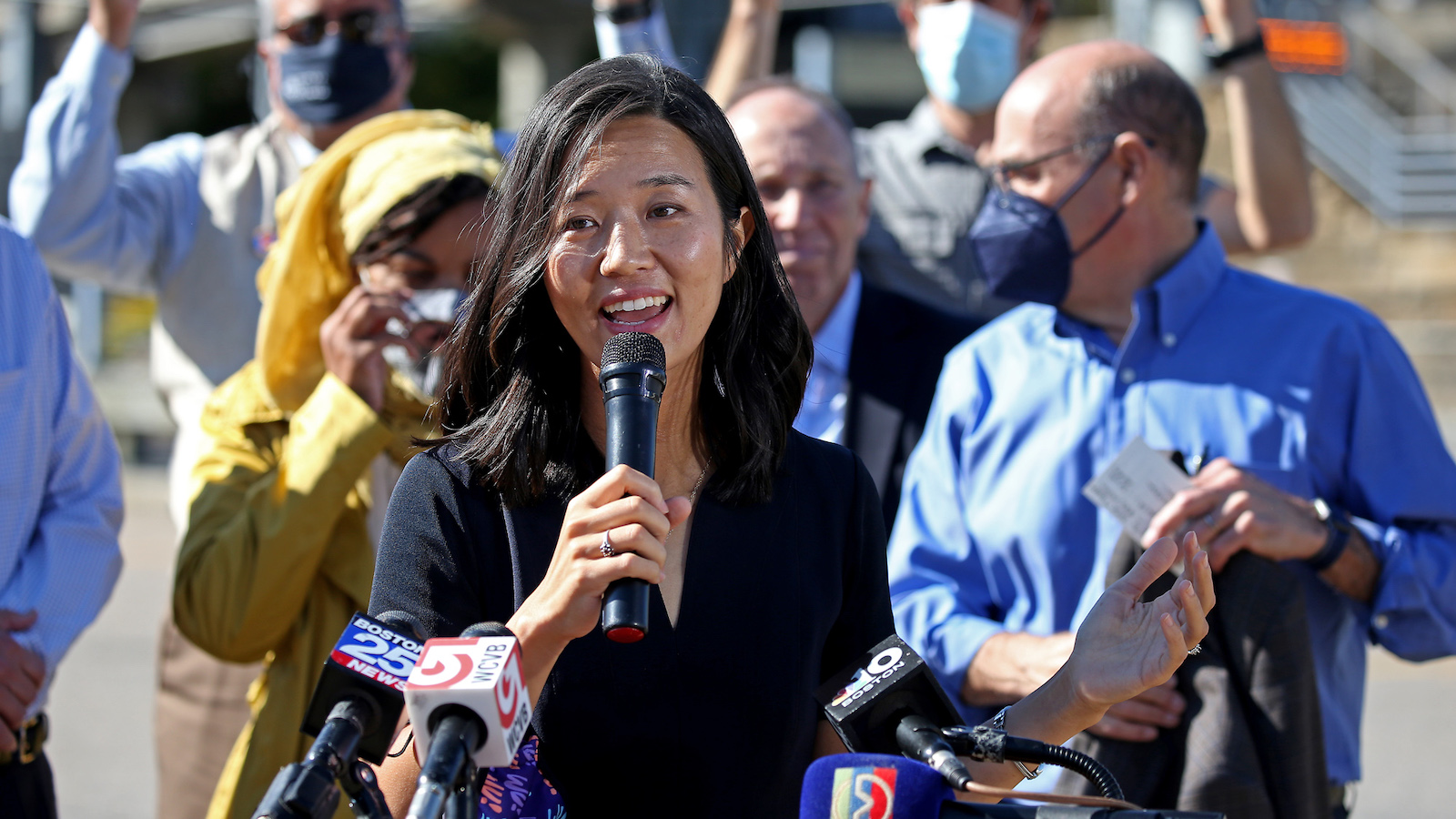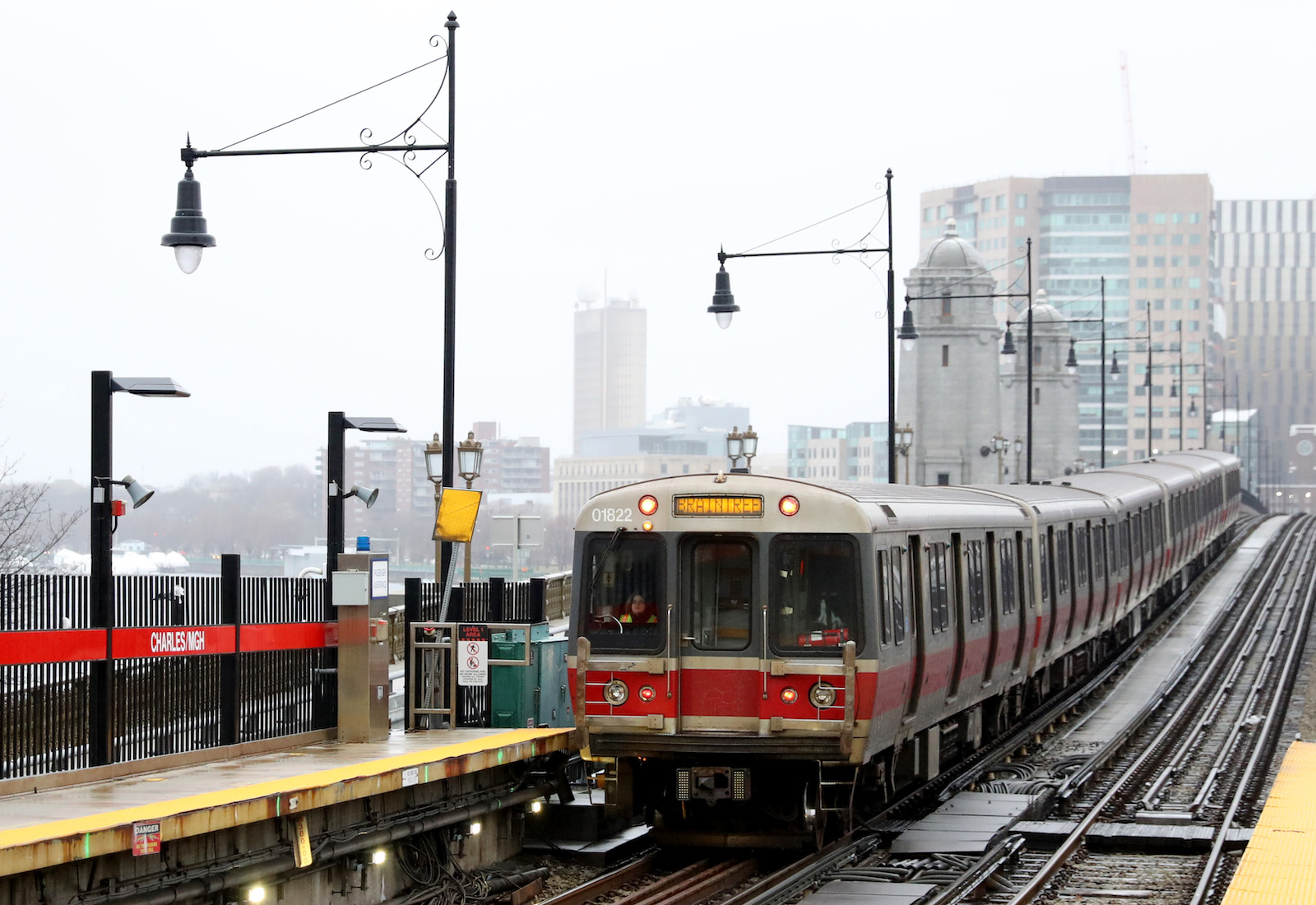As a Boston mayoral candidate, Michelle Wu stood out as a longtime champion of fare-free transit.
“Free public transportation is the single biggest step we could take toward economic mobility, racial equity, and climate justice,” Wu wrote back in 2019, in an op-ed for the Boston Globe. Since then, she’s galvanized opposition to fare hikes through protests and petitions, and — famously — continued to crisscross Boston on the city’s subway system, known colloquially as the “T.”
Since clinching the mayorship on November 2, Wu is now faced with the difficult task of delivering on a major campaign promise to eliminate fares for the city’s transit options. “Free the T” was a catchy campaign slogan, but the proposal’s feasibility remains an open question — one that could have reverberations beyond Beantown, as other major cities like Los Angeles and Washington, D.C., experiment with reducing or eliminating their transit fares.
Supporters of free transit see the elimination of ticket fares as a convenient way to slash emissions and increase equity. Making buses and subways more accessible can boost transit ridership, they say, potentially taking cars off the road and alleviating the financial burden of a daily ticket.
But opponents of the idea argue that even if city politicians were able to unilaterally eliminate fares for public transportation, fare-free transit is a financially untenable pipe dream. Boston’s transportation authority, for example, has long suffered budgetary shortfalls, with a September report from a watchdog organization saying that the system faces a “fiscal calamity.”
This is in part because state and local public transit authorities, including the Massachusetts Bay Transportation Authority, or the MBTA, have long relied on one-time state and federal relief funds and project grants to complete necessary maintenance and upgrades. Ticket fares are a much-needed steady source of income — they brought in about one-third of the MBTA’s revenue in both 2019 and 2020 — and some say that eliminating them could deepen agencies’ financial woes.
New funding would have to come from other sources — perhaps a local-option sales or property tax, or new taxes on fuel providers and ride-hailing services. But according to Rosalie Singerman Ray, an assistant professor of geography and environmental studies at Texas State University,* transit’s most pressing need is a consistent stream of investment from Congress. “What would make fare-free transit feasible is federal dollars,” she said — like the assistance that states received as part of the March 2020 CARES Act, but permanent. One recent proposal — the Freedom to Move Act, championed by Representative Ayanna Pressley and Senator Ed Markey, both Democrats from Massachusetts — would help cities like Boston get part of the way there. But according to Ray, even that proposal, which would have established a $5 billion competitive grant program to offset transit authorities’ fare revenues, would need to be expanded to eliminate transit fares across the country.
However, some argue that transitioning to a fare-free transit system could in itself ease transportation authorities’ financial troubles — if not solving the revenue problem, then at least allaying it. According to Jason Prince, a professor of social economy and public policy at Concordia University in Montreal and the co-editor of a book on free public transit, fare collection and policing can account for up to 20 percent of a transit agency’s operating costs. “If you do away with that,” he said, “you just saved 20 percent of your budget right there.”

Prince also suggested that universally fare-free transit doesn’t have to be advocates’ end goal. Under a popular program launched in 2013 in Tallinn, Estonia, for example, all of the city’s residents can get an unlimited pass to Tallinn’s buses, trams, trolleys, and inner-city routes on the urban commuter train, while visitors must pay ticket fares. According to Prince, the program has been a big success: Non-residents help to subsidize cost-free transit for those who reside in the city, while those living in the suburbs are incentivized to move into the urban center, reducing the transportation emissions associated with urban sprawl.
One of the keys to this program and others’ success, however, is the quality of the public transit — a key sticking point for opponents of a fare-free system, who argue that every dollar not collected through ticket fares is money siphoned away from improvements to the transportation system’s safety, predictability, and reliability. According to David Bragdon, executive director of the New York-based nonprofit TransitCenter, single-mindedly focusing on free public transit risks leaving inadequate infrastructure in place, causing riders to go from a $1.50 ride on an unreliable, infrequent bus to a free ride on an unreliable, infrequent bus.
“That’s really no bargain,” Bragdon said. “It doesn’t matter if it’s free because it doesn’t run frequently enough. You haven’t really helped anybody.”
To Bragdon, politicians would be better off funneling money into service improvements, while extending financial aid to the poorest riders through a means-tested assistance program. But Ray, the Columbia University doctoral candidate, pushed back on that logic, saying that it painted a “false binary” between service improvements and increased accessibility to public transit. Both are needed, she said; it’s just a question of how to invest in them incrementally. She offered an example scenario in which free transit passes are slowly rolled out to different segments of the population, beginning with the least affluent and eventually reaching all riders. That way, the system’s wealthiest users could defray the service’s operating costs — and allow for continued quality improvements — as policymakers find a way to procure long-term sources of funding.
In Boston, this partially mirrors Michelle Wu’s strategy. On her first day in office, she launched a two-year, fare-free program for three popular bus routes — all of which serve predominantly low-income, nonwhite communities. It’s unclear exactly how the move will play into the mayor’s longer-term strategy for increasing transit accessibility across the MBTA, but a press release announcing the move explained that it would allow Wu to “build regional and state-level momentum for fare-free public transit.”
However, the mayor’s next steps certainly won’t be easy. As critics have noted, the MBTA is managed by the Commonwealth of Massachusetts, not the mayor of Boston, so most major program changes will need buy-in from the state legislature — not to mention approval from the MBTA Board of Directors, which would have to engage with impacted communities and commission an equity analysis and for any large-scale fare elimination program, according to Monica Tibbits-Nutt, executive director of the pro-transit consulting firm 128 Business Council. (Wu was only able to eliminate bus fares because of an agreement with the MBTA to appropriate money from Boston’s federal COVID-19 relief funding.)
Ray called it “slightly pie-in-the-sky” to expect the entire MBTA system to go fare-free because of the election of a new mayor; the funding question looms too large for easy solutions. Tibbits-Nutt added that, until legislators at the state and federal level secure a direct, dedicated, consistent source of income for transit, discussions about fare-free public transportation is “just talking about dreams.”
“It’s a horrible thing that it keeps coming down to the money,” she said. “It’s really frustrating and it’s really sad.”
Others like Prince, the Concordia University professor, maintain more optimism that Wu’s status as a “strong mayor” will give her power to advocate for the kinds of changes that are needed to move toward fare-free transit. Plus, her “Free the T” slogan has helped elevate transit equity closer to the top of voters’ agendas. “If you can mobilize enough voters in the right direction,” Prince said, “you can get change.”
*Correction: This story originally misstated Rosalie Singerman Ray’s academic position.



